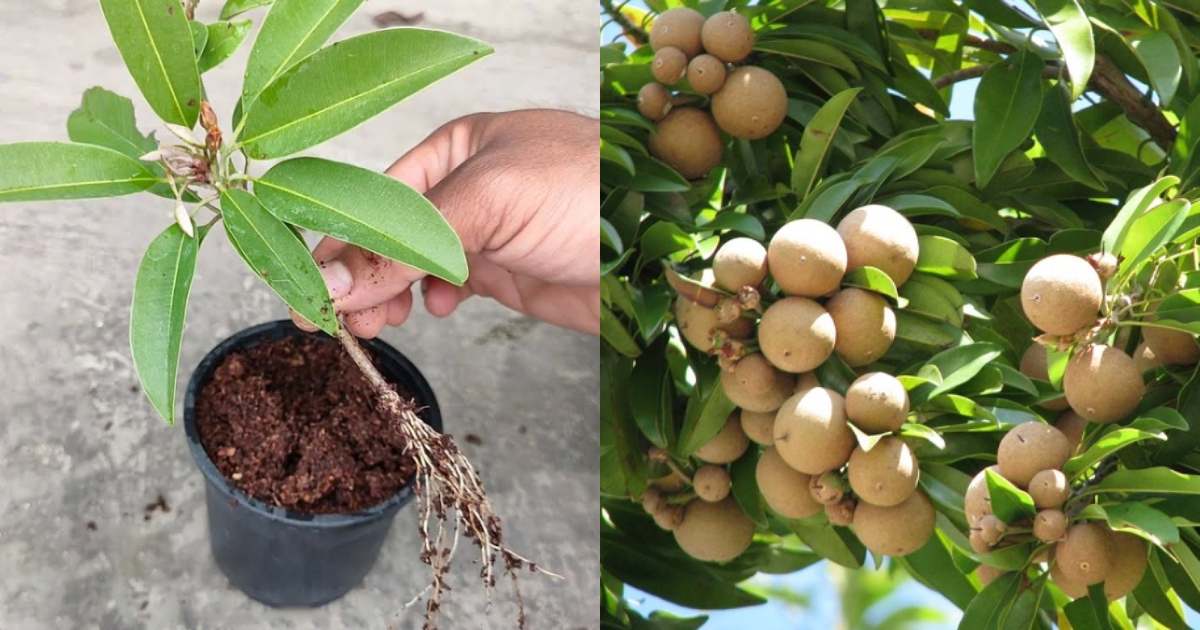
ഈ ഒരു സൂത്രം ചെയ്താൽ മതി! വീട്ടിലെ സപ്പോട്ട മരം കുലകുത്തി കായ്ക്കും; ഇനി 365 ദിവസവും സപ്പോട്ട പൊട്ടിച്ചു മടുക്കും!! | Sapota Farming Tips
Sapota Krishi Tips
Sapota Farming Tips : നാടൻ പഴങ്ങളിൽ ഏറ്റവും മധുരമുള്ള പഴമാണ് സപ്പോട്ട. പ്രോട്ടീന്, കൊഴുപ്പ്, ധാതുക്കള്, നാരുകള്, കാല്സ്യം, ഫോസ്ഫറസ്, ഇരുമ്പ് കരോട്ടിന് എന്നിവയെല്ലാം അടങ്ങിയതാണ് സപ്പോട്ട. മെക്സിക്കോ സ്വദേശിയായ സപ്പോട്ട, കേരളത്തിന്റെ കാലാവസ്ഥയിലും നന്നായി വളരും. അതുകൊണ്ടു തന്നെ ഒന്നാന്തരം ഒരു പഴമെന്ന
നിലയിലും മനോഹരമായ ഒരു അലങ്കാരവൃക്ഷം എന്ന നിലയിലും സപ്പോട്ട നമുക്ക് വച്ചുപിടിപ്പിക്കാവുന്നതാണ്. വിത്ത് പാകി തൈകൾ ഉണ്ടാക്കി എടുക്കാം. വിത്ത് വഴി വളർത്തിയെടുത്ത ചെടിയിൽ സപ്പോട്ട ഉണ്ടാകാൻ 5, 6 വർഷം കാല താമസമെടുക്കും. പതിവയ്ക്കൽ, ഗ്രാഫ്റ്റിങ് എന്നീ രീതികൾ വഴി ഉത്പാദിപ്പിച്ചവയാണെങ്കിൽ 2-3 വർഷത്തിനുള്ളിൽ സപ്പോട്ട ഉണ്ടാകുന്നതാണ്.
ഡിസംബറിലാണ് പൂവിടീൽ തുടങ്ങുക. സപ്പോട്ട കൃഷി ചെയ്യുന്നവർ നേരിടുന്ന ഒരു പ്രാധാന പ്രശ്നം ആണ് പൂക്കളുടെ കൊഴിഞ്ഞുപോക്ക്. ഇതിനു പരിഹാരമായി ചെടിയുടെ ചുവട്ടിൽ മാത്രമല്ല ചെടി മൊത്തത്തിലും നനച്ചു കൊടുക്കുക. മാർച്ച് – ഏപ്രിൽ വിളവെടുപ്പു കാലം. സപ്പോട്ട നന്നായി പൂക്കാനും കായ്ക്കാനും ഇങ്ങനെ ചെയ്തു നോക്കൂ.. ഇനി സപ്പോട്ടമരം പൂത്തുലയും.
എങ്ങിനെയാണ് ചെയ്യേണ്ടത് എന്ന് വീഡിയോയില് വിശദമായി നിങ്ങൾക്ക് കാണിച്ചു തരുന്നുണ്ട്. ഇതുപോലെ നിങ്ങളും വീട്ടിൽ ചെയ്തു നോക്കൂ.. നിങ്ങൾക്കും നല്ല റിസൾട്ട് കിട്ടുന്നതാണ്. ഈ വീഡിയോ നിങ്ങളെ എല്ലാവരെയും സഹായിക്കും എന്ന് കരുതുന്നു. വീട്ടിൽ സപ്പോട്ട ഉവർക്ക് ഉപകാര പ്രദമായ അറിവാണിത്. Sapota Farming Tips Video credit: Livekerala
🌳 Sapota Farming Tips for High Yield and Profit
Sapota, also known as chikoo, is a profitable fruit crop that thrives in tropical and subtropical climates. Whether you’re a beginner or an experienced farmer, these sapota cultivation tips can help maximize your harvest and income.
✅ Best Sapota Farming Practices:
- Choose the Right Variety:
Popular high-yielding sapota varieties include Kalipatti, Cricket Ball, and PKM-1. - Soil Requirement:
Sapota grows best in well-drained loamy soil with a pH between 6.5 to 8.0. Avoid waterlogged areas. - Planting Season:
The ideal time for sapota plantation is from June to September, aligning with the monsoon for better root establishment. - Spacing and Pit Preparation:
Maintain a spacing of 10×10 meters. Use pits of size 1m³ filled with FYM, neem cake, and organic compost. - Irrigation Tips:
Regular watering is crucial during the initial 2–3 years. After establishment, drip irrigation is ideal to save water and improve yield. - Fertilizer Application:
Apply NPK (Nitrogen, Phosphorus, Potassium) in balanced doses. Incorporate organic fertilizers like vermicompost and bone meal for sustainable growth. - Pest and Disease Control:
Watch for sapota leaf spot, fruit fly, and mealybugs. Use organic pest control like neem oil spray for protection. - Pruning:
Annual pruning helps in better light penetration and airflow, boosting fruit quality and yield. - Harvesting:
Sapota takes about 7–9 months from flowering to mature. Harvest when fruits turn dull brown and soft to the touch.
Sapodilla Farming Tips
- sapota cultivation techniques
- how to grow chikoo commercially
- sapota farming profit per acre
- best fertilizer for sapota trees
- organic farming of chikoo
